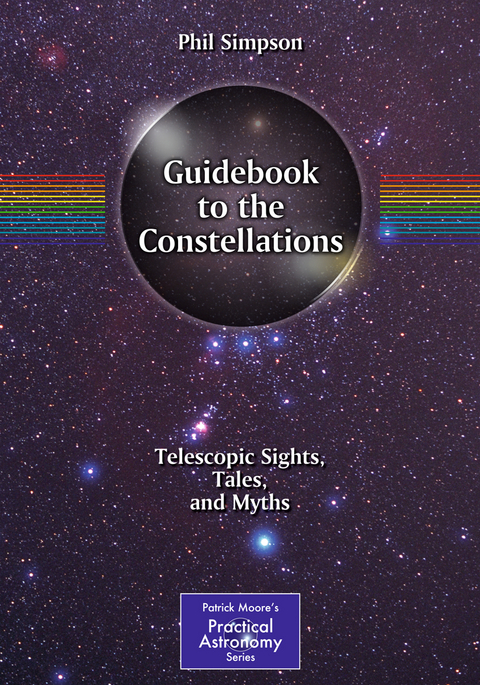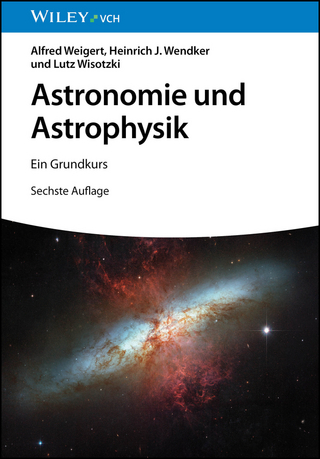Guidebook to the Constellations
Springer-Verlag New York Inc.
978-1-4419-6940-8 (ISBN)
This handbook is a guide to exploring the classical night sky and its wonderful telescopic sights. All 88 officially recognized constellations are presented in natural groups which are related by their origin and location in the sky. Each group is explained by a fascinating story which tells what each constellation represents, how it appears in the sky, and why the other constellations of the group are close by, or related in some other manner. Some of these stories are classical myths which show how and why ancient cultures saw the constellations as related groups. Others are about more modern astronomers who sought recognition by filling in the gaps between the ancient constellations with inventions of their own. Both types of stories are crafted to make the constellation groups memorable, so that amateur astronomers can not only locate and recognize the constellations more easily, but also be able to pinpoint the celestial objects they contain more quickly.
Specific instructions are given for finding each constellation, how to spell and pronounce the constellation and star names, plus the origins of the star names. Finder charts show each constellation group and a large area of sky around the group. These charts also indicate pointer stars which aid in finding the constellations.
More detailed charts show how each constellation figure is visualized through simple line drawings. For each constellation, there is a table of about 10 to 30 telescopic objects selected to include a wide range of difficulty. Some can be glimpsed with the unaided eye, others require a 12 or 14 inch telescope. All the most prominent telescopic objects are included, plus a varied selection of interesting, but much more difficult objects. The tables include each object’s celestial coordinates, type, size, brightness, other information specific to each type of object, and a recommendation of the appropriate telescope size needed for good viewing.
There are alsophotographs of constellations and telescopic objects, detailed locator charts for the hard-to-find objects, and plots of binary star orbital motions. The same charts used to show the constellation figures are repeated, with the addition of symbols indicating the locations of all the selected telescopic objects.
An index and seven appendices help the user find specific objects or classes of objects.
An active amateur astronomer for over 40 years, L. Phillip Simpson has worked as an instructor of astronomy at four different universities and colleges. During the 1980s he was Director of the Clyde W. Tombaugh Space Instruction Center. More recently he worked for Northrop Grumman as Product Team Leader for design and production of telescopes for the Space Based Infrared System. He is currently a part-time assistant at NM Mexico Skies (a leading guest observatory and internet telescope provider), instructing astrophotographers and visual observers.
How to Observe the Sky Using this Book.- The North Circumpolar Constellations.- The Andromeda Group.- The Orion Group.- The Hercules Group.- The Boötes Group.- The Corvus Group.- The Aquila Group.- The Argo Navis Group.- The Lyra Group.- The Gemini Group.- The Watery Part of the Sky.- Other Northern Constellations.- Modern Constellations Formed by Plancius.- Modern Constellations Formed by Plancius & Keyser.- Modern Constellations Formed by Hevelius.- Modern Constellations Formed by Lacaille.- Glossary of Terms.- Appendices.- Index.
| Reihe/Serie | The Patrick Moore Practical Astronomy Series |
|---|---|
| Zusatzinfo | 25 Illustrations, color; 345 Illustrations, black and white; XII, 863 p. 370 illus., 25 illus. in color. |
| Verlagsort | New York, NY |
| Sprache | englisch |
| Maße | 178 x 254 mm |
| Themenwelt | Sachbuch/Ratgeber ► Natur / Technik ► Weltraum / Astronomie |
| Naturwissenschaften ► Physik / Astronomie ► Astronomie / Astrophysik | |
| ISBN-10 | 1-4419-6940-3 / 1441969403 |
| ISBN-13 | 978-1-4419-6940-8 / 9781441969408 |
| Zustand | Neuware |
| Haben Sie eine Frage zum Produkt? |
aus dem Bereich




